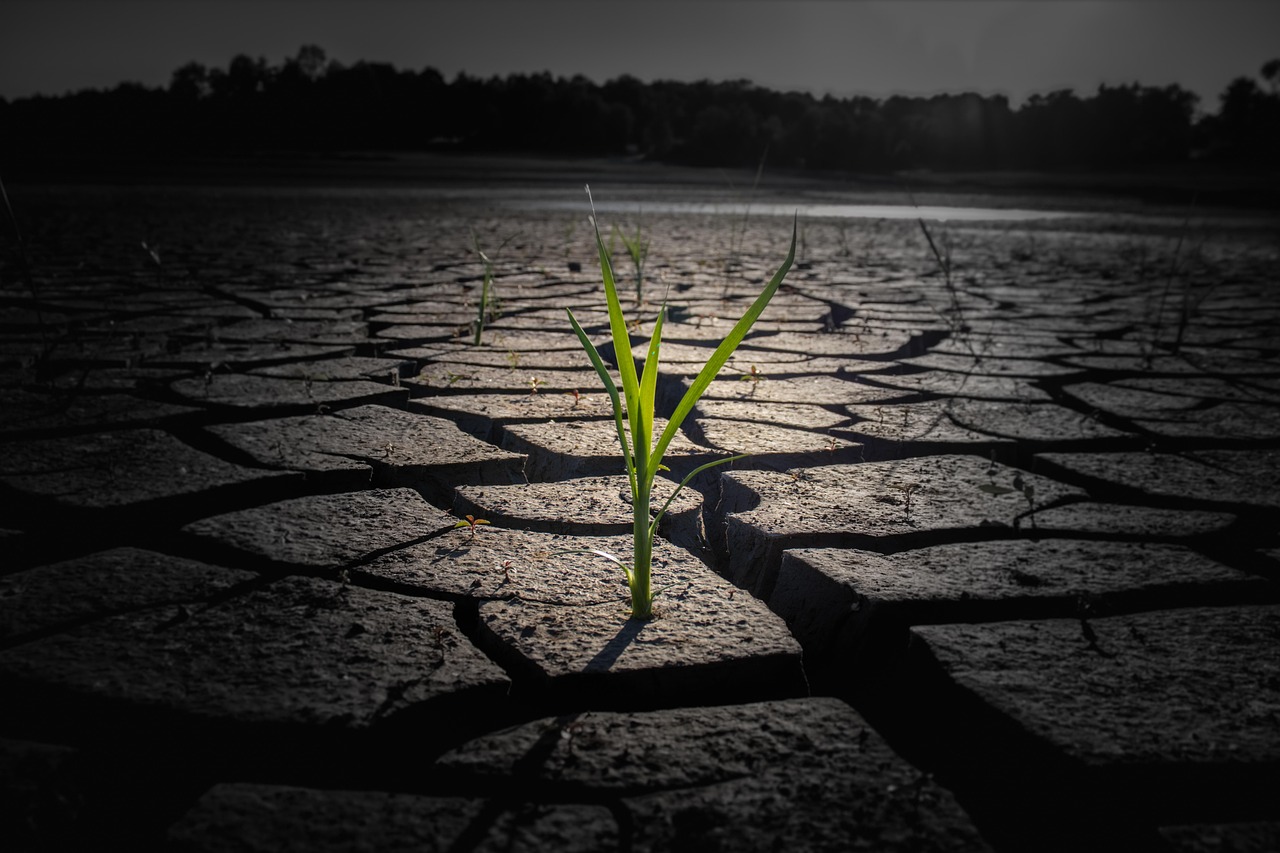Climate change represents one of the greatest challenges of our era, with impacts manifesting themselves in increasingly frequent and intense extreme events, such as prolonged droughts, devastating floods, unprecedented heat waves, and rising sea levels. Given this undeniable reality, the ability to anticipate, absorb, adapt and recover from these impacts has become a global priority. It is in this context that the concepts of climate resilience and adaptation gain centrality, not only as defensive responses, but as proactive strategies to build a safer and more sustainable future. This article will deepen the understanding of these terms, exploring their strategic importance, the various approaches and strategies for implementation, the challenges inherent in this process, and the financing mechanisms that enable the construction of more resilient societies and ecosystems. We will also address case studies and future perspectives, aiming to offer a comprehensive overview of how we can coexist and thrive on an ever-changing planet.
Climate Resilience and Adaptation: Fundamental Concepts

To navigate the complex landscape of climate change, it is crucial to understand the distinction and interconnectedness between climate resilience and adaptation. Although often used interchangeably, these terms have important nuances that shape the strategies and actions required.
Climate Resilience can be defined as the ability of a system – be it a community, ecosystem, infrastructure, or economy – to anticipate, resist, absorb, accommodate, and recover from the effects of a dangerous weather event or a long-term climate trend, efficiently and sustainably. It’s not just about surviving a shock, but learning from it, strengthening yourself, and ideally, emerging in a better state than before. Resilience implies a dynamic capacity for adjustment and transformation, allowing the system to continue to function and develop even in the face of climate disruptions. It is the ability to persist and thrive in an ever-changing environment, minimizing damage and maximizing recovery.
On the other hand, **Climate Adaptation** refers to the initiatives and measures taken to reduce the vulnerability of natural and human systems to the effects of climate change, whether current or expected. It is an ongoing process of adjusting to these effects, seeking to moderate or avoid harm, as well as exploring beneficial opportunities that may arise. Adaptation can be proactive (planned before impacts occur) or reactive (implemented in response to impacts already observed). Examples of adaptation measures include building more flood-resilient infrastructure, developing more drought-tolerant agricultural crops, implementing early warning systems for extreme events, and restoring coastal ecosystems to protect against storms. Adaptation is one of the two main responses to climate change, the other being mitigation, which focuses on reducing greenhouse gas emissions to curb global warming.
The interconnectedness between resilience and adaptation is intrinsic: adaptation is a key means to build resilience. By implementing adaptation measures, communities and ecosystems become better able to withstand and recover from climate impacts, increasing their overall resilience. An effective climate resilience strategy, therefore, integrates a series of adaptive actions that aim to strengthen a system’s capacity to cope with climate uncertainty and variability. In short, while adaptation is the process of adjustment, resilience is the desired outcome – a state of robustness and resilience in the face of a changing climate.
The Strategic Importance of Climate Resilience in the 21st Century

In a world where the effects of climate change are becoming increasingly evident and impactful, climate resilience transcends the environmental sphere to become a strategic imperative for global security, well-being, and economic development. Its importance can be analyzed from different perspectives, which are interconnected and reinforce the urgency of investments and coordinated actions.
First, climate resilience is critical to the protection of lives and livelihoods. Extreme weather events, such as floods, droughts, heat waves, and storms, cause devastating human and economic losses. Resilient communities and infrastructure are better able to withstand these shocks, minimizing the number of casualties, protecting assets, and ensuring the continuity of essential services. This includes everything from building safer housing and effective early warning systems to implementing agricultural practices that withstand harsh weather conditions. The ability to anticipate and manage these impacts is a pillar of human security in a changing climate.
Second, climate resilience is crucial for economic stability and sustainable development. Climate-related disasters not only generate direct reconstruction costs, but also cause production disruptions, agricultural losses, damage to infrastructure, and negative impacts on tourism and other economic sectors. Lack of resilience can reverse years of development, pushing communities into poverty and exacerbating inequalities. On the other hand, investing in climate resilience can generate significant economic returns, such as reducing disaster losses, creating new markets for green technologies and services, and increasing productivity in sectors such as agriculture. Climate resilience is therefore an essential component of any development strategy that seeks long-term prosperity.
In addition, climate resilience strengthens food and water security. Climate change directly affects food production and the availability of fresh water, threatening the security of populations around the world. Resilience strategies, such as crop diversification, the development of more climate-resilient varieties, the efficient management of water resources, and the protection of ecosystems that provide water services, are vital to ensure that communities have continued access to food and water, even in climate stress scenarios. Agriculture, in particular, is a sector that benefits enormously from resilient practices, as temperature and precipitation patterns are constantly changing.
Fourth, climate resilience is indispensable for the preservation of ecosystems and biodiversity. Healthy and resilient ecosystems, such as forests, mangroves, and coral reefs, play a crucial role in regulating the climate, protecting against natural disasters, and maintaining biodiversity. Investing in the resilience of these ecosystems, through actions such as restoring degraded areas, sustainable forest management, and protecting coastal zones, not only strengthens their ability to withstand climate impacts, but also generates multiple benefits, such as water purification, soil conservation, and the protection of endangered species. Nature-based solutions are increasingly recognized as effective and cost-effective strategies to increase climate resilience.
Finally, climate resilience promotes social justice and equity. The impacts of climate change disproportionately affect the most vulnerable communities, who often have fewer resources to adapt and recover. By investing in climate resilience, it is possible to reduce these inequalities, ensuring that everyone, regardless of their geographic location or socioeconomic status, has the ability to protect themselves and thrive in the face of climate challenges. This requires an inclusive approach that involves local communities in the planning and implementation of resilience strategies, ensuring that their needs and expertise are considered. In short, climate resilience is not just an environmental or economic issue, but an ethical and social imperative to build a fairer and safer future for all.
Adaptation and Resilience Strategies: Integrated Approaches for a Secure Future

Building climate resilience requires a multifaceted and integrated approach, combining diverse adaptation strategies at different scales and sectors. These strategies aim to reduce vulnerability, strengthen response capacity, and promote recovery from the impacts of climate change. Below, we explore some of the most effective and promising approaches.
One of the most important strategies is resilient urban and territorial planning. Cities and regions are particularly vulnerable to climate impacts due to their high population density and concentration of infrastructure. Resilient planning involves revising building codes to make them more resilient to extreme events, creating natural buffer zones (such as parks and green areas) to absorb excess water in the event of flooding, implementing more efficient urban drainage systems, and protecting coastal areas from rising sea levels. This also includes developing contingency plans and early warning systems for evacuation and disaster response. Integrating climate data and future projections into long-term planning is critical to ensuring that cities are built and developed in a way that supports climate challenges.
Second, nature-based solutions (NBS) emerge as a powerful and cost-effective strategy for adaptation and resilience. NBS use the processes and characteristics of ecosystems to provide social, economic, and environmental benefits while increasing climate resilience. Examples include restoring mangroves and coral reefs to protect coasts from storm surges and erosion, reforesting watersheds to improve water quality and reduce flood risk, creating green roofs and rain gardens in urban areas to manage stormwater runoff and reduce the heat island effect. These solutions not only increase resilience but also promote biodiversity, improve air and water quality, and provide green spaces for recreation and human well-being.
Another crucial strategy is the adaptation of infrastructure. Existing infrastructure, such as power grids, transportation, sanitation, and telecommunications systems, has been designed for a climate that no longer exists. Infrastructure adaptation involves strengthening and modernizing these structures to withstand extreme weather events. This can include raising roads and bridges in flood risk areas, protecting electrical substations from storms, building dams and reservoirs to manage water scarcity or excess rainfall, and using more weather-resistant materials in new construction. Critical infrastructure, in particular, must be prioritized to ensure the continuity of essential services during and after weather events.
In the agricultural sector, the adaptation of agriculture and food security is vital. Climate change directly affects food production, requiring the implementation of more resilient agricultural practices. This includes diversifying crops to reduce reliance on a single crop, developing plant varieties that are more resistant to drought and disease, adopting efficient irrigation techniques, promoting conservation agriculture, and implementing early warning systems for droughts and floods. Food security also benefits from shorter and more diversified supply chains, which are less vulnerable to disruptions caused by extreme weather events.
Finally, strengthening governance and institutional capacity is a cross-cutting strategy that permeates all others. This involves developing climate adaptation policies and plans at national, regional and local levels, allocating adequate resources, building the capacity of public managers and communities, and promoting collaboration between different sectors and stakeholders. Effective governance ensures that adaptation strategies are implemented in a coordinated, transparent and inclusive manner, involving the participation of all relevant actors, from governments and businesses to civil society and local communities. The ability to monitor and evaluate the effectiveness of adaptation measures is also crucial to adjust strategies as needed and ensure long-term resilience.
Challenges in Building Climate Resilience

Despite the growing awareness of the urgency of climate resilience and the availability of diverse adaptation strategies, its construction faces a number of complex and multifaceted challenges. Overcoming these obstacles is critical to ensuring that communities and ecosystems can effectively adapt to the impacts of climate change.
One of the most significant challenges is the **funding shortage**. While the cost of inaction is much higher than that of adaptation, mobilizing sufficient financial resources to implement large-scale resilience measures is still a bottleneck. Many developing countries, which are the most vulnerable to climate impacts, have limited access to funds for adaptation. In addition, the complexity of climate finance mechanisms and the difficulty in quantifying the benefits of adaptation make investing in resilience less attractive to some investors. A substantial increase in adaptation financing flows, both from public and private sources, and the simplification of processes for accessing these resources is needed.
Another crucial challenge is the uncertainty and complexity of climate impacts. Climate change manifests itself in different forms in different regions, and future projections still contain a degree of uncertainty. This makes it difficult to plan and implement effective adaptation measures, as decisions need to be made based on information that may evolve. The complexity of natural and social systems also means that adaptation solutions need to be contextually specific and flexible, able to adjust to new information and conditions. The lack of localized climate data and detailed impact models exacerbates this challenge, especially in regions with lower research and monitoring capacity.
The **lack of institutional and technical capacity** is a recurring obstacle, especially in developing countries. Many local and national governments lack the technical expertise, human resources, or governance structures needed to develop and implement comprehensive adaptation plans. These include a lack of experts in climatology, resilient engineering, sustainable urban planning, and disaster management. Training professionals, strengthening institutions, and creating knowledge networks are essential to overcome this gap and ensure that adaptation decisions are based on evidence and best practices.
In addition, fragmentation of efforts and lack of coordination between different levels of government, sectors and stakeholders can undermine the effectiveness of resilience actions. Climate change is a cross-cutting problem that requires an integrated approach, but responsibilities are often divided between different ministries, agencies, and administrative levels, leading to uncoordinated and inefficient actions. Creating dialogue platforms, promoting cross-sectoral collaboration and policy harmonisation are crucial to ensure that resilience efforts are synergistic and maximise impact.
Finally, resistance to change and risk perception also pose challenges. Implementing adaptation measures may require significant changes in land use, agricultural practices, building codes, and consumption patterns, which may generate resistance from individuals and interest groups. In addition, the perception that climate impacts are a distant problem or that they will not directly affect certain communities can lead to inaction. It is critical to effectively communicate the risks and benefits of adaptation, engage communities in the decision-making process, and ensure that solutions are socially just and equitable. Building climate resilience is an ongoing process that requires long-term commitment and overcoming technical, financial, institutional, and social barriers.
Case Studies and Success Examples in Climate Resilience

The theory and challenges of climate resilience come to life through practical examples and case studies that demonstrate how communities and nations are implementing effective adaptation measures. These examples not only inspire but also provide valuable lessons about what works and how strategies can be replicated and scaled.
A notable example of adaptation and resilience in urban areas is the initiative of **cities investing in Nature-Based Solutions (NBS)**. Cities like Copenhagen, Denmark, have implemented “climate streets” and parks that act as water retention basins during heavy rainfall, diverting excess water from residential and commercial areas. Other cities, such as New York, have invested in restoring wetlands and coastal dunes to create natural barriers against storms and rising sea levels. In Brazil, examples of NBS include the creation of rain gardens, green roofs, and the renaturalization of urban rivers to improve drainage and reduce flood risk. These approaches not only mitigate climate impacts, but also improve the quality of urban life, increase biodiversity, and provide green spaces for the community.
In the agricultural sector, crop diversification and the development of climate-resilient varieties are successful adaptation strategies. In semi-arid regions, farmers have adopted more drought-tolerant crops and efficient irrigation techniques to ensure food production even in conditions of water scarcity. In Bangladesh, for example, the development of salinity-tolerant rice varieties has been crucial for food security in coastal areas affected by saltwater intrusion. In addition, the implementation of agroforestry systems, which combine trees with agricultural crops, helps to protect the soil, conserve water, and increase the resilience of production systems to extreme weather events.
Modernization and strengthening of infrastructure are also evident in several projects. In the aftermath of Hurricane Sandy, New York invested heavily in protecting its critical infrastructure, including raising electrical substations and building flood barriers. In Japan, the construction of dikes and advanced tsunami warning systems has been instrumental in protecting coastal communities. In developing countries, resilient infrastructure projects include building elevated roads and bridges in flood-risk areas, and strengthening power grids to withstand storms. These actions demonstrate a growing recognition that infrastructure must be designed and built for the climate of the future, not the past.
In terms of governance and planning, cities such as Rotterdam, the Netherlands, are pioneers in the development of comprehensive climate adaptation plans, which integrate water management, urban planning, and community engagement strategies. The C40 Cities program, a global network of large cities committed to climate action, has promoted the exchange of best practices and the development of adaptation projects in several metropolises around the world. In Brazil, some cities have developed their own municipal adaptation plans, seeking to integrate climate resilience into their urban development and risk management policies.
These case studies and success examples demonstrate that climate resilience is achievable through a combination of technological innovation, nature-based solutions, infrastructure investments, and a strong political and social commitment. They serve as a roadmap for other communities and nations seeking to strengthen their capacity to adapt and build a safer future in the face of climate change.
Financing Climate Resilience: Mobilizing Resources for a Secure Future

Building climate resilience is a large-scale undertaking that requires significant investments. The mobilization of adequate financial resources is, therefore, one of the fundamental pillars to enable the implementation of adaptation strategies around the world. Climate finance for adaptation encompasses a variety of sources, mechanisms, and instruments, each with its own unique characteristics and challenges.
One of the main sources of financing is multilateral climate funds, such as the Green Climate Fund (GCF), the Adaptation Fund (AF), and the Global Environment Facility (GEF). These funds are funded by developed countries and aim to support mitigation and adaptation projects in developing countries. They play a crucial role in financing large-scale projects, such as building resilient infrastructure, implementing early warning systems, and restoring ecosystems. However, accessing these funds can be complex and time-consuming, requiring detailed proposals to be prepared and strict criteria to be met.
In addition to multilateral funds, bilateral financing from development agencies in developed countries is also an important source of funds for adaptation. This type of financing can be more flexible and aligned with each country’s specific priorities, but it can also be subject to political and economic conditionalities.
Domestic financing, which comes from national and subnational public budgets, is another vital source of funds. Governments can allocate funds for adaptation through their annual budgets, create national climate funds, or implement environmental taxes and levies to generate revenue. The Climate Fund in Brazil, for example, is a climate policy instrument that finances mitigation and adaptation projects. Integrating climate resilience into long-term investment plans and sectoral budgets is key to ensuring that domestic resources are targeted effectively.
The private sector also has an increasingly important role to play in financing climate resilience. Companies can invest in adaptation to secure their own operations and supply chains, as well as to develop new products and services that meet the growing demand for resilient solutions. Financial instruments such as green bonds, adaptation loans and parametric insurance are becoming more common, attracting private capital to resilience projects. However, private sector involvement is still limited compared to financing for mitigation, due to the difficulty in quantifying the financial returns of adaptation.
To overcome financing challenges, a concerted effort is needed to increase the scale and effectiveness of financing streams. This includes meeting developed countries’ commitments to provide climate finance to developing countries, simplifying processes for accessing multilateral funds, creating an enabling investment environment for the private sector, and developing innovative financial instruments that can attract capital for adaptation. In addition, it is crucial to ensure that funding is directed to the most vulnerable communities and that projects are developed in a participatory and transparent manner.
Investing in climate resilience is not a cost, but a highly profitable investment. Studies show that every dollar invested in adaptation can generate a return of up to ten times the amount invested over a ten-year period, through the reduction of disaster losses, increased productivity and the creation of new jobs. Mobilizing adequate financial resources is therefore an essential step in building a safer, more prosperous, and more resilient future for all.
Navigating the Future with Climate Resilience

On a planet rapidly transforming under the impact of climate change, climate resilience and adaptation emerge not just as academic concepts, but as existential imperatives for the survival and well-being of communities, ecosystems, and economies around the world. This article sought to unravel the complexity of these terms, highlighting their strategic importance, the multifaceted approaches to their implementation, the persistent challenges, and the financing mechanisms that are crucial to paving the way towards a more secure and sustainable future.
We understand that climate resilience is the intrinsic ability of a system to anticipate, absorb, adapt to, and recover from climate shocks and stresses, while adaptation is the active process of adjustment that enables this resilience. Together, they form the backbone of a proactive and effective response to the inevitable impacts of a changing climate. The importance of investing in resilience is undeniable: it protects lives and livelihoods, ensures economic stability, strengthens food and water security, preserves vital ecosystems, and promotes social justice, ensuring that the most vulnerable communities are not left behind.
Strategies for building resilience are diverse and complementary, ranging from resilient urban and territorial planning and the implementation of nature-based solutions to infrastructure modernization and agriculture adaptation. Each approach, when integrated and contextualized, contributes to strengthening a system’s ability to deal with climate uncertainty and variability. Successful examples around the world demonstrate that, while the challenges are great, climate resilience is achievable through innovation, collaboration and an unwavering commitment.
However, the path to resilience is not without obstacles. Funding shortages, uncertainty of climate impacts, lack of institutional and technical capacity, and fragmentation of efforts are challenges that require coordinated attention and solutions. The mobilization of financial resources, from both public and private sources, is crucial, and the understanding that investment in adaptation generates significant economic returns should drive a greater allocation of capital to this area.
Ultimately, building climate resilience is an ongoing, collaborative effort that requires the participation of all levels of society – governments, the private sector, academia, civil society, and citizens. It is a process of constant learning and adjustment, where innovation and adaptability are keys to success. By embracing climate resilience as a guiding principle, we can not only mitigate the risks of a changing climate, but also build stronger communities, more robust economies, and a healthier planet for present and future generations. It is an investment in our own future, a future where the ability to adapt and thrive in the face of adversity becomes our greatest strength.

Sem comentários